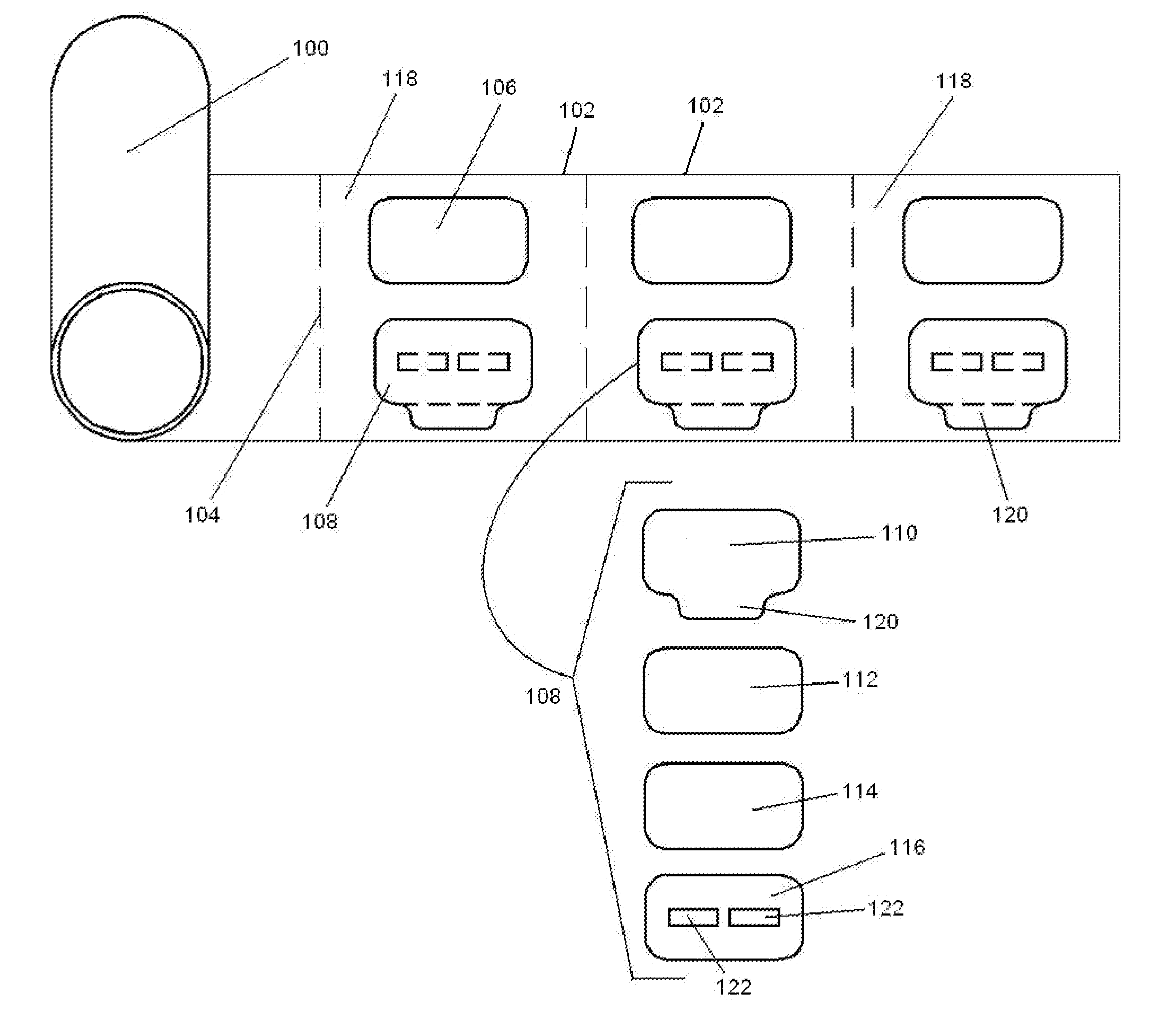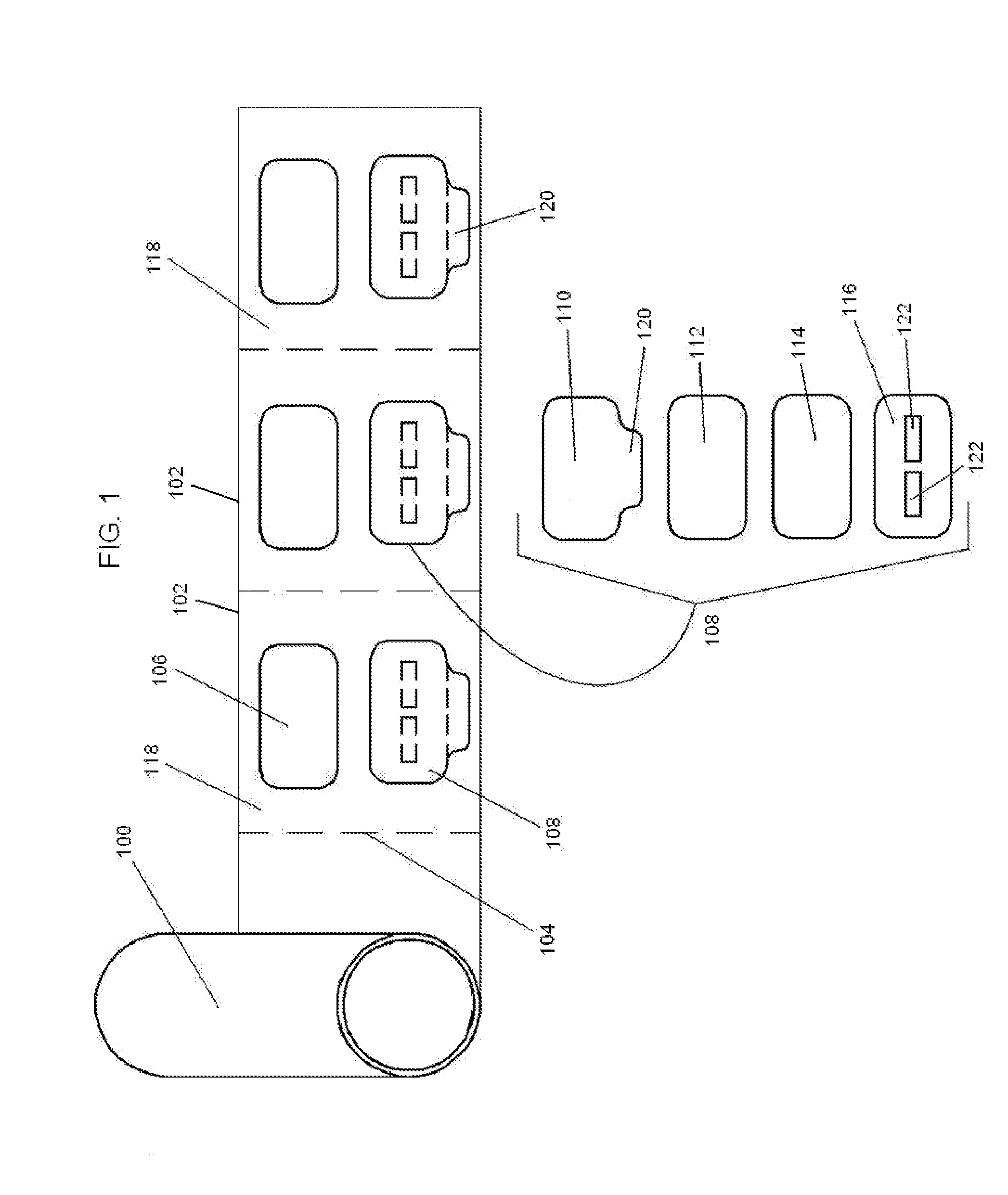Oximetry sensor adjunct for routine diagnostic screening and monitoring
a technology of oximetry sensor and routine diagnostic screening, applied in the field of oximetry sensor adjunct for routine diagnostic screening and monitoring, can solve the problems of underutilized traditional oximetry sensor, more vulnerable to signal noise and interference, and underdeveloped market, so as to prolong the life of the sensor, increase patient tolerance, and restore the integrity of adhesion
- Summary
- Abstract
- Description
- Claims
- Application Information
AI Technical Summary
Benefits of technology
Problems solved by technology
Method used
Image
Examples
Embodiment Construction
[0020]Briefly, and in general terms, provided herein is a medical device in the form of an adjunct that can be retrofitted to existing sensors for measuring oxygen saturation and optionally, other physiologic data in various parts and tissues of the body. The adjunct will find usefulness in the emergency room, surgery room, and for critical care, neonatal, and pediatric screening, among countless other applications. By extending the performance life of existing sensors, restoring adhesion integrity, and improving patient tolerance through superior adhesives the adjunct described herein makes it affordable to measure oxygen saturation at a greater number of sites in a greater number of patients.
[0021]According to one embodiment, the medical device takes the form of an adjunct and requires existing sensors (e.g. NIRS sensors) to function. The adjunct itself does not have any electronic components, energy-emitters, or energy-detectors. Thus, all of the electronics required by monitors ...
PUM
 Login to View More
Login to View More Abstract
Description
Claims
Application Information
 Login to View More
Login to View More - R&D
- Intellectual Property
- Life Sciences
- Materials
- Tech Scout
- Unparalleled Data Quality
- Higher Quality Content
- 60% Fewer Hallucinations
Browse by: Latest US Patents, China's latest patents, Technical Efficacy Thesaurus, Application Domain, Technology Topic, Popular Technical Reports.
© 2025 PatSnap. All rights reserved.Legal|Privacy policy|Modern Slavery Act Transparency Statement|Sitemap|About US| Contact US: help@patsnap.com



